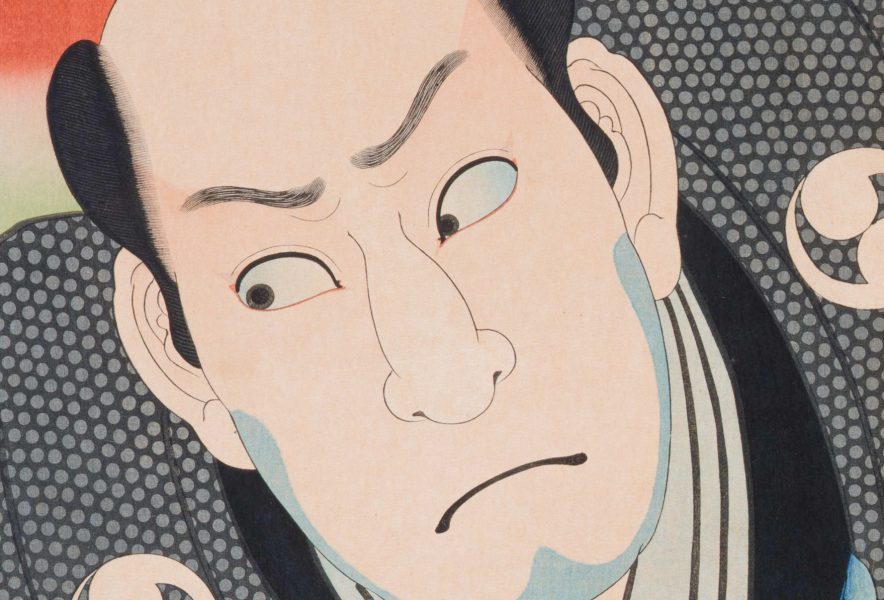They were in black and white at the beginning.
Ukiyo-e(浮世絵)can be either hand-painted or printed, but the basic type is the woodblock. In the early 17th century, when Hishikawa Moronobu (菱川師宣/1618?-1694) began his career, the only colors available were the black of Sumi (墨/black ink) for lines and the white color of the surface of washi paper itself.
See also What is ‘Ukiyo-e’? Art of the Edo Period (1615–1868)
Ukiyo-e works of this period were in sharp contrast to black and white, and the content depicted was very popularized. For this reason, Ukiyo-e became more popular in Edo (Tokyo) than in the Kansai area of Kyoto and Osaka (the area was called Kamigata), where the culture of the imperial court was deeply rooted. Later, multicolor prints spread, but it is said that Pablo Picasso (1881-1973) highly valued the black-and-white early prints rather than colored prints.
Ukiyo-e became popular because its contents could be easily understood by anyone, regardless of their level of education. Ukiyo-e was originally used as illustrations for books which contain funny stories (called “Han-pon[版本]” in Japanese). However, soon the relationship between the text and the pictures was reversed.The illustrations became the main part of the book and the text became a minor part. This is probably because pictures are easier to understand at a glance.
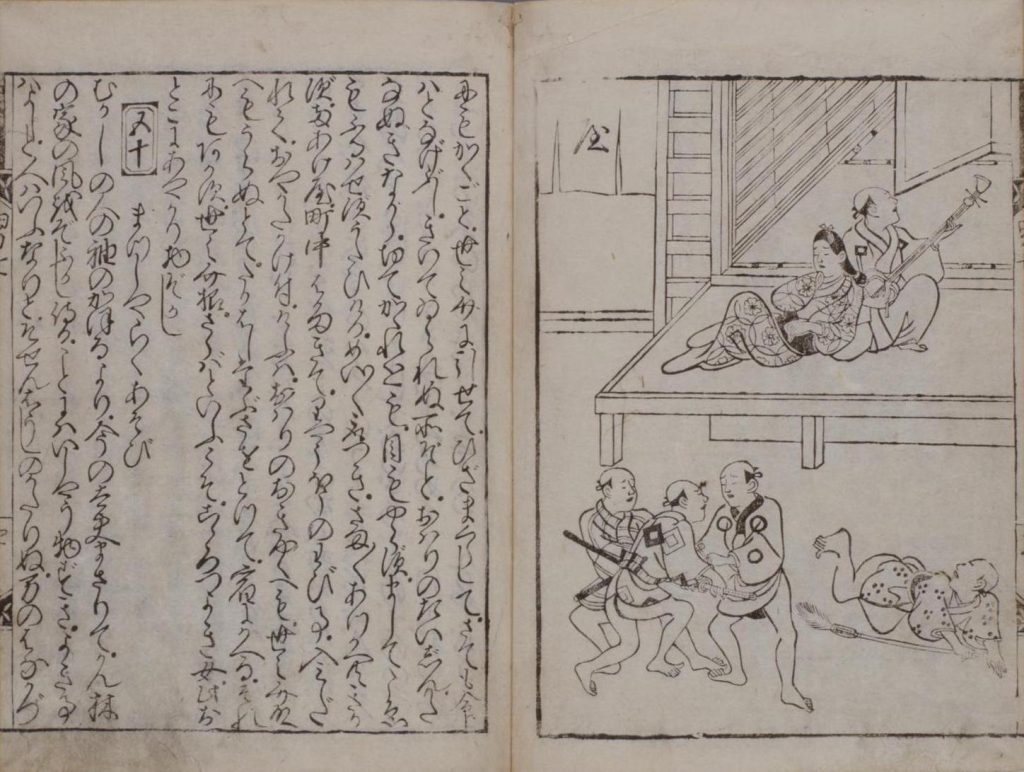
A scene from Koshoku-Ichidai-Otoko(『好色一代男』/ written by Ihara Saikaku, paintings by Hishikawa Moronobu, 1684)NDL digital collections[https://dl.ndl.go.jp/]
Ukiyo-e was the media for the people
In Edo, a series of picture-driven editions were published in this way. Gradually, however, readers became unsatisfied with the black-and-white representation alone. Therefore, “color” was introduced to Ukiyo-e. At first, artisans worked on each print individually with a brush. This was called Te-sai-shiki(手彩色/hand coloring). However, this was a very labor-intensive process that required a lot of manpower and labor costs, so a technique was developed to apply colors by printing, and it became the mainstream method for Ukiyo-e.

Beauty Looking Back (見返り美人図/ by Hishikawa Moronobu, 17th century) ColBase[https://colbase.nich.go.jp/]
At the same time, sales methods also changed. Ukiyo-e was sold in the form of independent single-page prints rather than books(Han-pon). While the size of a printed book spread at the time was about current A5 size, a single sheet was larger, up to A4 size or even larger. In this way, the “Ukiyo-e” format was perfected.
At that time, Japan had both a gold standard and a silver standard for money, and the smallest unit of silver standard money was called “Mon(文)”. Ukiyo-e was said to have cost between 16 and 20 mons, so that a common child could buy one with his or her allowance. In today’s value, the price of one Ukiyo-e is thought to have been about 3 to 5 US dollars. Thus, Ukiyo-e was not an art form for the upper class or aristocrats, but for the common people.
The contents of Ukiyo-e expanded from reflecting the state of the times (called “Ukiyo,” which is also the origin of the word Ukiyo-e) to depicting what was popular in Edo at the time or depicting scenery. In addition, yakusha-e (役者絵/portraits of actors) and Bijinga (美人画/portraits of beautiful women and girls), such as popular kabuki actors and girls who became famous for their beauty, were like posters of actors or celebrities today.
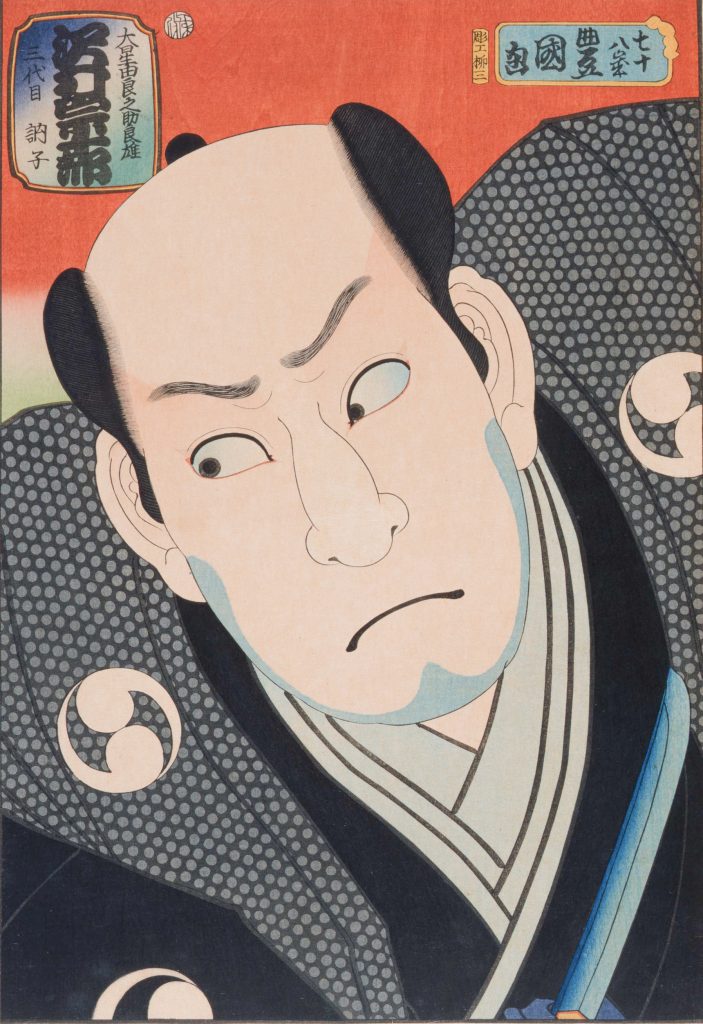
An Ukiyo-e of a Kabuki actor (Utagawa Toyokuni III 三世豊国, 19th century) ColBase[https://colbase.nich.go.jp/]
Other Edo customs, such as enjoying the cherry blossoms in Ueno(花見) and fireworks over the Sumida River, the lively townscape of merchants and craftsmen, and famous Edo landmarks were also depicted. In addition, paintings of scenery along the Tokaido Highway and the Kiso Kaido (aka.Nakasendo Highway), which led to Edo, also became popular. The popularity of ukiyo-e landscapes in particular matched the desire of people to travel, and the Ise pilgrimage (伊勢参り/a trip to the Ise Shrine, which became very popular during this period) became popular. Ukiyo-e was not only a source of entertainment for people, but also great media for conveying a variety of information.
There was even pornography
As already explained, Ukiyo-e is a culture born out of the spirit of “let’s enjoy this world we are living in now. For this reason, the subject matter was not anything lofty, but anything that would please the reader. “Shunga” in particular, depicted male-female dalliances, and while being a form of pornography, they were also used for sex education and were popular with both men and women alike.
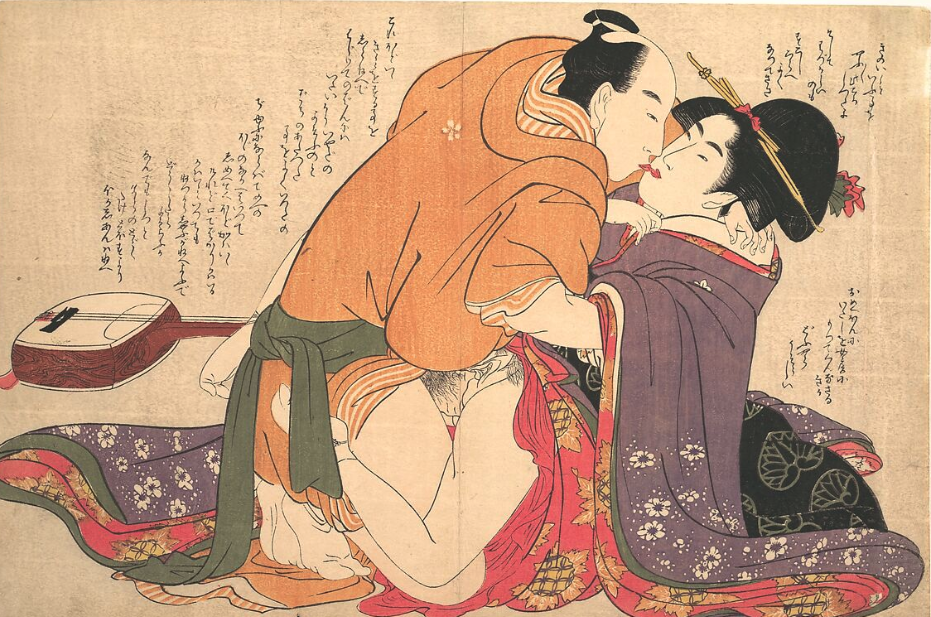
An ertotic print (春画/ by Kitagawa Utamaro, 17th century)
Metropolitan Museum[https://www.metmuseum.org/]
Before the birth of Ukiyo-e, a group of painters known as the Kano school (狩野派)was the dominant force in Japanese art, both in Kyoto (where the Imperial Court was located) and in Edo. In the late 16th century, Kano Eitoku(狩野永徳) painted “Rakuchu Rakugai-zu Byobu(洛中洛外図屏風),” which was 1.6 m long and 3.6 m wide.
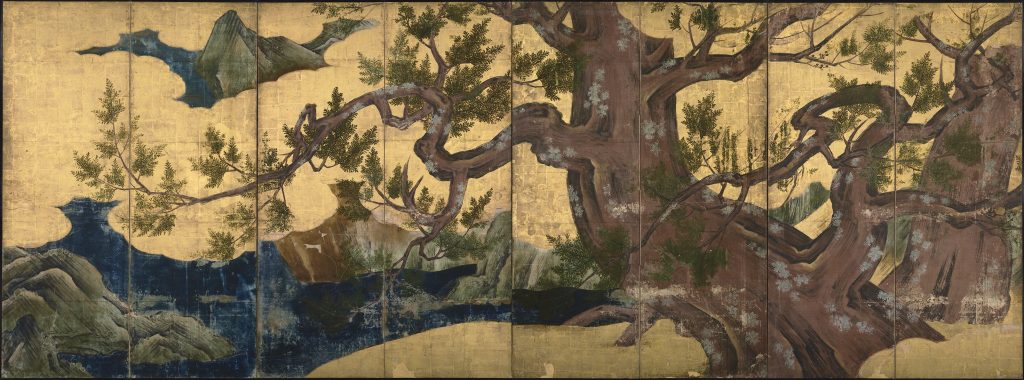
Cypress Trees (国宝 檜図屏風/ Kano Eitoku, 1590. national treasure) ColBase[https://colbase.nich.go.jp/]
Ukiyo-e, on the other hand, is only large enough to be held in both hands, but they all have one thing in common: they are objects to be appreciated for their depiction of the customs of the times. While Ukiyo-e became popular, the Kano school and the Tosa school (土佐派/a school of Yamato-e that served the court) began to refer to their paintings as “hon-ga(本画/meaning s true painting),” which they called different from Ukiyo-e. However, they too were influenced by Ukiyo-e, and Ukiyo-e was also influenced by Hon-gas. Ukiyo-e continued to entertain the Japanese people for nearly 300 years, until the end of the Edo period in the 19th century.
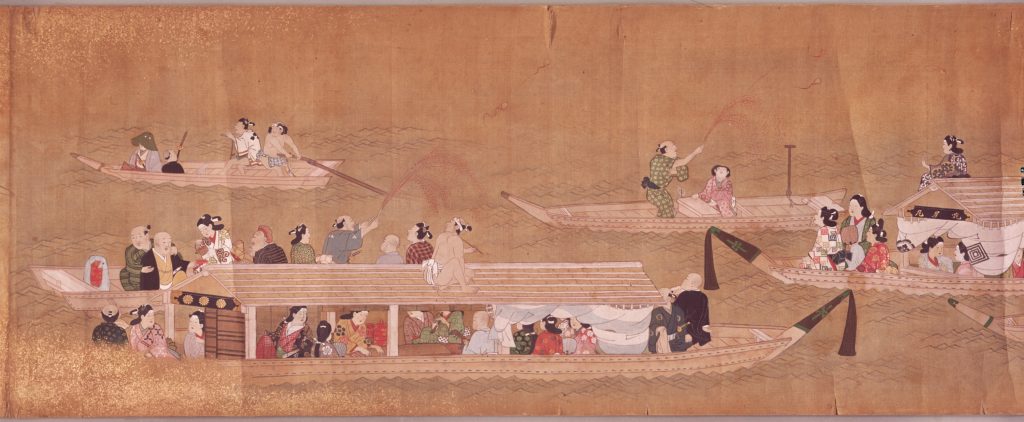
Genre scenes in Edo (浮世人物図/By Attributed to Hishikawa Moronobu, 17th century) ColBase[https://colbase.nich.go.jp/]

